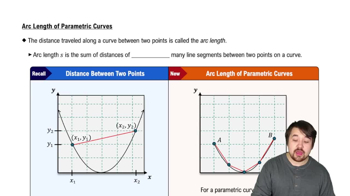41–48. Geometry problems Use a table of integrals to solve the following problems.
43. Find the length of the curve y = eˣ on the interval from 0 to ln 2.
 Verified step by step guidance
Verified step by step guidance Verified video answer for a similar problem:
Verified video answer for a similar problem:



 5:23m
5:23mMaster Finding Area Between Curves on a Given Interval with a bite sized video explanation from Patrick
Start learning